
71st Meeting of the Panel on Phytosanitary Measures
EPPO Headquarters, 2024-03-19/22
The Panel met in Paris in the EPPO headquarters on 2024-03-19/21. The main task of this Panel is to evaluate risks presented by specific pests and design phytosanitary measures to avoid their introduction and spread. On 2024-03-22, a technical visit was organized at Rungis international market.
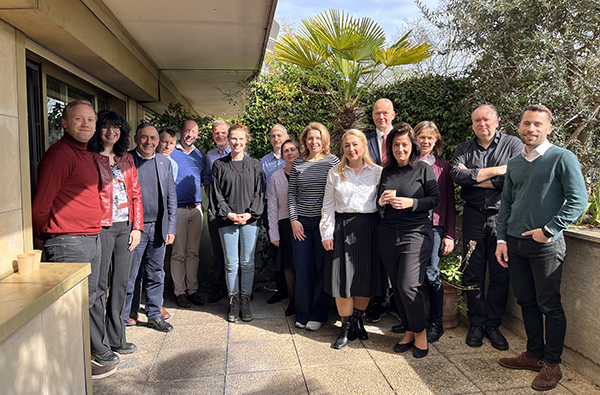
Group photo of the Panel on Phytosanitary Measures (2024-03-19/22)
EPPO Lists of pests recommended for regulation
Recommendations for regulation by EPPO are made either based on EPPO pest risk analyses (PRAs) prepared by Expert Working Groups (EWG), or PRA reports based on national/EU PRAs. The Panel reviewed the following documents:
- Chloridea virescens (Lepidoptera: Noctuidae) - draft EPPO PRA: the Panel recommended to the Working Party on Phytosanitary Regulations the addition of this pest to the EPPO A1 List.
- Fusarium oxysporum f. sp. cubense Tropical race 4 – PRA report based on an EFSA pest categorization, a French PRA, and the IPPC Secretariat prevention, preparedness and response guidelines: the Panel recommended to the Working Party on Phytosanitary Regulations the addition of this pest to the EPPO A2 List.
- Toumeyella parvicornis (Hemiptera: Coccidae) - PRA report based on an EFSA pest categorization: the Panel recommended to the Working Party on Phytosanitary Regulations the addition of this pest to the EPPO A2 List.
The EPPO PRA for tomato brown rugose fruit virus (ToBRFV) was updated after recent scientific literature was analysed by an EWG. The Panel considered that even if the situation evolved with an increase in the area of distribution, the recommendation for regulation as an EPPO A2 pest was still justified because there are EPPO countries where the pest is not present or widespread. Depending on the pest situation, the Panel considered that EPPO countries could apply some of the measures for seeds and young plants in another regulatory framework (e.g. as a regulated non-quarantine pest, RNQP).
Recent information received on the situation for Ips calligraphus & Ips grandicollis (Coleoptera : Curculionidae: Scolytinae), ‘Candidatus Phytoplasma phoenicium’, Ripersiella hibisci (Hemiptera: Rhizoecidae), Bactrocera dorsalis sensu lato (Diptera: Tephritidae), Scirtothrips aurantii (Thysanoptera: Thripidae) and Unaspis citri (Hemiptera: Diaspididae) was shared with the Panel. All these pests were maintained on the EPPO A1 List. The Panel was also updated about the situation of Xylella fastidiosa in Puglia (Italy), the EPPO Network of experts working on the surveillance, monitoring, and control of Agrilus planipennis (Emerald ash borer) and the situation for some other EPPO A2 Listed pests in the EPPO region.
Alert List
The Panel reviewed the EPPO Alert List (the purpose of this List is to warn countries about possible new risks, and in certain cases to propose candidates for PRA and, if relevant, recommend them for regulation). Considering that an alert had been given, the Panel recommended deletion of Arboridia kakogawana (Hemiptera: Cicadellidae) and tomato mottle mosaic virus (ToMMV). The other reasons for deletion were, for both pests, the non-significance of the impact observed, and for A. kakogawana, the importance of natural spread and the existing regulation in several EPPO countries prohibiting import of Vitis plants for planting.
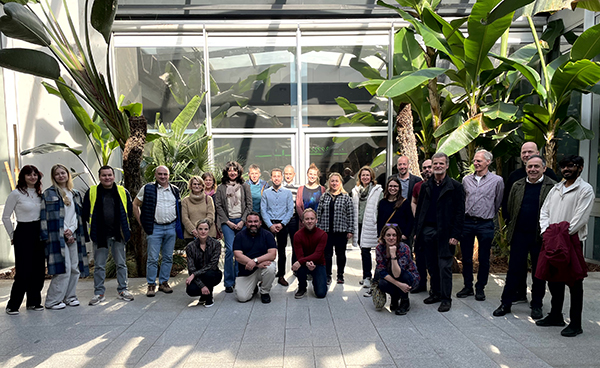
Group photo with Panel members, DRIAAF Ile de France (local service of NPPO France)
and the EPPO Secretariat at Rungis international market (2024-03-22)
Pest Risk Analysis
The selection of priorities for the organization of EWGs for PRA for the year to come was performed. The three highest priorities for PRA identified by the Panel were Xylotrechus pyrrhoderus (Coleoptera: Cerambycidae), citrus yellow vein clearing virus and Pseudips mexicanus (Coleoptera: Curculionidae: Scolytinae).
The draft DEFRA PRA for beech leaf disease (in preparation in the context of EPPO Jens-Georg Unger Plant Health Fellowship) was presented to the Panel.
The Panel considered that preparing a PRA report on Pochazia shantungensis based on the EFSA pest categorization should be a priority for 2025. When discussing bark and ambrosia beetles of non-coniferous wood, and their fungal symbionts, the Panel considered that Harringtonia lauricola (and its vectors) and Cnestus mutilatus should be the highest priorities for preparing a PRA report based on the EPPO Study, the EFSA pest categorisation being finalized and new publications available. High interest was also expressed for the preparation of PRA reports for Platypus quercivorus and Euplatypus parallelus, but with a lower priority.
The priorities for an EPPO PRA or a PRA report will be discussed with the Working Party on Phytosanitary Regulations.
The Panel was updated about the RNQP Project part II, a project financed by the European Commission, mainly to assess the potential RNQP status of the pests listed in the EU Fruit Marketing Directives.
A revision of the guidance document on PM 5/5 Decision-support scheme for an express Pest Risk Analysis was presented to the Panel.
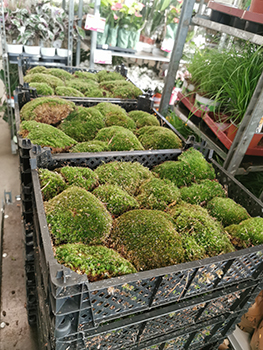
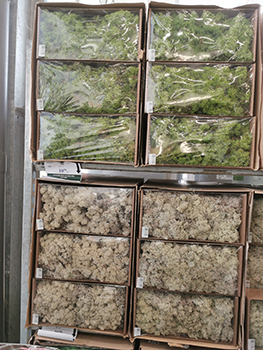
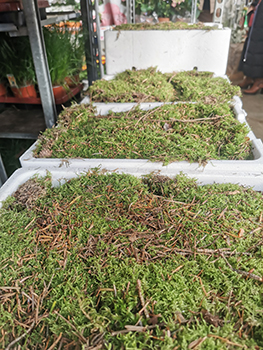
Mosses and lichens traded at Rungis international market (2024-03-22). The risk with such commodities is being discussed in the Panel
Information projects
The Panel was given a presentation on ongoing and recent developments on the EPPO Global Database (GD) consisting of adding lists of vectors for regulated plant pathogens, linking pests with biological control agents, and making links with other EPPO databases. An update about the EPPO Platform on communication material and about the project which is in the process of updating datasheets for all EPPO A1/A2 pests, were given.
The next Panel meeting is planned for 2024-10 in York (GB).
